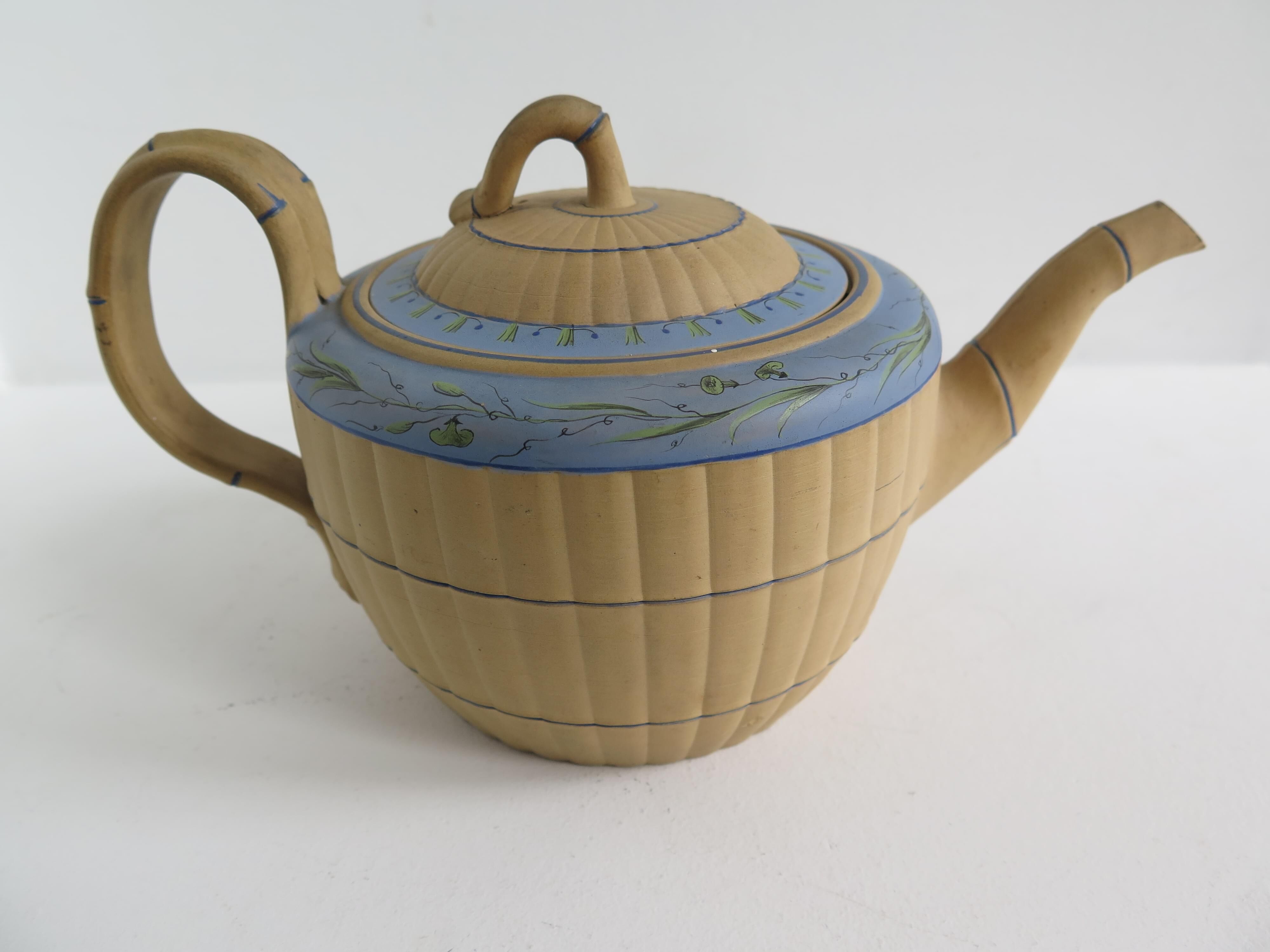Body Of Work

Body Of Work
By TJC
‘The work of Josiah Wedgwood has a profound and far-reaching effect, not only on the subsequent course of pottery and porcelain manufacture in England, but also on Continental wares.’
- George savage, English pottery and porcelain, 1961
Recently, TJC was donated an attractive teapot (A2094) by Foundation Volunteer Guide, Karina James. It is from the celebrated English pottery Wedgwood, which specialised in the production of innovative and experimental ceramics.
This teapot was made at Staffordshire-born potter and entrepreneur Josiah Wedgwood (1730-1795) Etruria pottery around 1770. It was made of caneware, was hand-thrown on a potter’s wheel, moulded, engine-turned, and was finished with hand-painted encaustic decoration.
Josiah Wedgwood had refined the types of clays used by peasant potters for their buff, brown wares into a new and lighter body which he called ‘Cane’, the factory name to describe the coloured ware they developed and popularised. This body was significantly improved over the next two decades, so it wasn’t until 1787 that caneware appeared in Wedgwood’s Catalogue of Ornamental Wares.
Caneware was also described as a ‘dry body’ which didn’t require glazing as the stoneware became non-porous due to its high firing in the kiln. It was also possible to add coloured oxides (ochreous earths) to give the right hue to the clay and these included basalts, jasper, rosso antico (red), cane, buff, drab, chocolate, and olive variations. Caneware is also characterised by its fine texture that could handle delicate detailing, press relief, and enamelled decoration. After firing, the surface could also be polished to a very smooth finish.
The early success of Wedgwood’s dry body caneware encouraged further research and development of coloured clays. These self-coloured bodies were, apart from bone china, the most important technical and artistic development by Wedgwood in the 19th century. The teapot is finished with the use of an engine-turning lathe. The development of engine-turned earthenware and stonewares has been attributed to Josiah Wedgwood. He became fascinated by an engine-turning lathe (lapidary wheel) that he had seen at businessman, inventor, mechanical engineer, and silversmith Matthew Boulton’s metal-working facility in Birmingham in 1763 and was intrigued by the possibilities that such a machine might hold for use on pottery.
Engine-turned items require a great amount of planning. Potters couldn’t just throw a random shape on the potter’s wheel and then turn and decorate it on the engine lathe. The potter would have to carefully draw out and plan the size of each curve, cut, and type of ornament. Knives would be cut to fit the exact shape of large sections of the body in order to produce vertical fluting or reeding. The time needed to set up the lathe for each specific operation was considerable, and therefore economy dictated that large numbers of a specific design be made while the lathe was set up.
Engine-turning allowed the cutting of shallow regular patterns into the leather-hard surface of pots as they rotated slowly on the machine. Turners in the pottery carved wares worked with incredible precision. This ingenious machine produced extraordinary, geometrically exact flutes and ribs, as well as graphic and striated patterns.
Wedgwood also created a variety of shapes and designs to keep up with new trends. Cane ware’s heyday coincided with the fashion for bamboo-inspired designs during the Regency period. Caneware’s body was particularly suited to the production of a range of bamboo moulded and shaped wares that were based on late 17th century Chinese models that had been imported to England. The designs were also informed by plants brought back by global plant-hunters who imported new trees and other species, especially from America and East Asia in the 18th century.
From the early days of the pottery, Wedgwood used pattern books to index their designs. The pattern on the shoulder of the teapot is taken from First Pattern Book which Josiah Wedgwood started shortly after 1759. The First Pattern Book has sample designs which have been cut, trimmed, and pasted onto pages of the bound volume, rather like a scrap book. There are hundreds of painted border designs with each usually including a number for reference purposes. It appears that pattern number ‘92’ was chosen for this teapot and resembles sprays of a newly discovered botanical specimen Convolvulus along with elegant, elongated leaves.
The smooth surface of caneware provided the ideal surface for the application of these finely drawn decorations referred to as ‘encaustic’, an arbitrary name given by Wedgwood for a mixture of enamel pigments and a slip (a mixture of clay and water), which was hand-painted and fired on to the body. This remarkable teapot is a fine exemplar of Josiah Wedgwood’s innovation in clay, his inquisitive adoption of new manufacturing techniques, and astute readiness to cater to market trends, and a worthy addition to the Permanent Collection
Journals
About US
Explore
Contact
VISIT
See our VISIT page for hours and directions
BY PHONE
+61 3 9416 2515
BY POST
PO Box 79, East Melbourne VIC 8002
ONLINE
General enquiries
Membership enquiries
Shop
Donation enquiries
Subscribe to E-Newsletter



